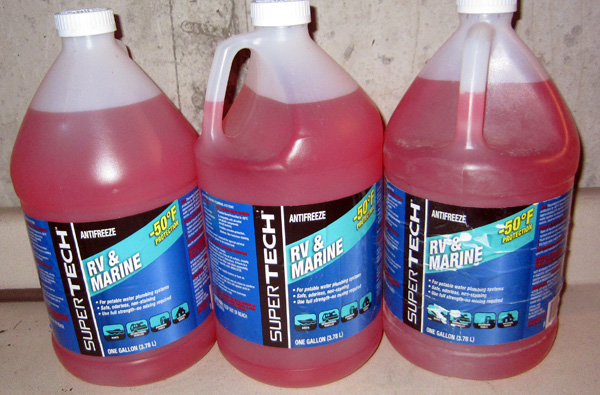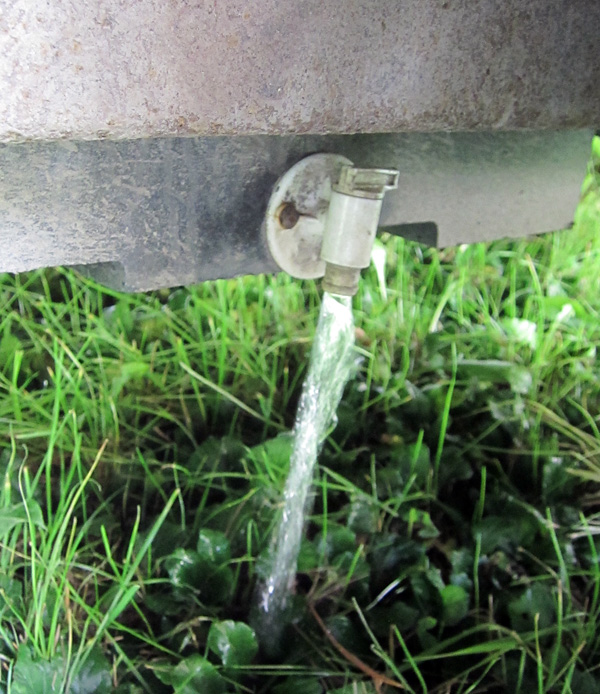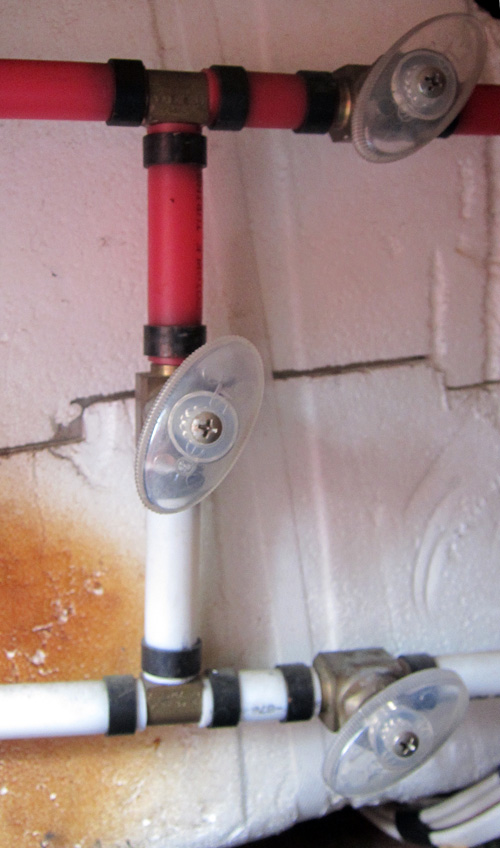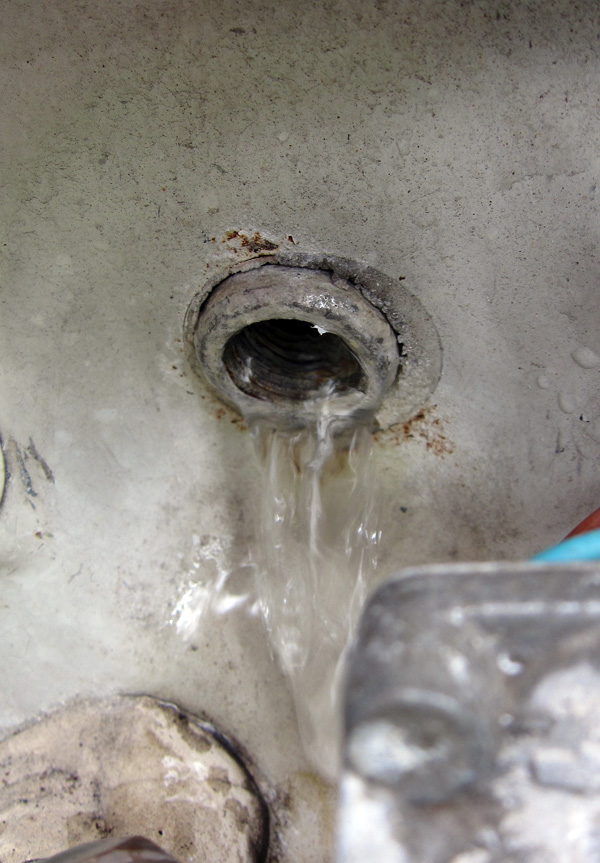With temperatures forecast for 22 degrees F last night, I felt pretty smug having a wood fire going in the house and having the Airstream winterized and ready for what we know is up ahead. The fact that I worked on the project a week or so ago when it was rather balmy makes it even nicer. At the risk of much more info than most people want, let me briefly run through the process that I use on the Safari. Every rig is a bit different but essentially, it’s a matter of getting water out of the lines and tanks and replacing it with anti-freeze.

This propylene glycol antifreeze is about $5 a gallon. It takes about two gallons for the Airstream.
The first step is to drain the water out of the system. Some folks use compressed air on the lines to help with this but I just open the drains. There is the fresh water tank drain, a plug for the hot water tank, and some drains underneath for low points in the lines. Of course, you should have your black and grey water tanks empty or just containing some anti-freeze.

Believe me, it’s much easier to drain the water tank when it is 50 degrees out than 30 and blowing snow pellets.
One of the key steps in the process is to bypass the hot water tank so that you keep it empty and do not introduce costly anti-freeze into it. There are three valves and while I have it in my written instructions, I just close the open ones and open the closed one, and reverse that process when getting the system back in operation in warm weather.

The valves on the horizontal pipes are closed in winter and the one on the vertical is opened, bypassing hot water tank.
Now, you pump in the anti-freeze. The previous owner installed a short length of plastic tubing that I can insert in the gallon jug, and after changing a valve near the water pump, draw pink fluid into the system. It’s just a matter of opening a faucet, turning on the water pump, and waiting for the water in the line to discharge and for pink fluid to start flowing. You do this for hot and cold on the sink, lavatory, and shower. Make sure to winterize the flexible spray hose in the sink. (That’s the voice of experience.) Do the same for the toilet, dump some anti-freeze down all the traps, and you should be pretty well done.
This year, I caught the flush water in a pan and tossed it out the door, keeping it out of the grey tank. It took a little less than two gallons and I think it’s all set. We’ll see in January in Georgia when we defrost and light off the system again.

